15 Muscle Car Facts, Price Trends, and Statistics to Know in 2025
-
Chris Dinesen Rogers
- Last updated:

Note: This article’s statistics come from third-party sources and do not represent the opinions of this website.
The definition of a “muscle car” is not so black-and-white. According to Merriam-Webster, it is “any of a group of American-made 2-door sports coupes with powerful engines designed for high-performance driving.” It differs from a sports car which emphasizes handling over acceleration. However, the line is often blurred between the two types.
The interest in muscle cars isn’t waning, with the US market reaching up to $15 billion in 2020. Experts expect it to continue climbing to over 25% to 18.77 billion in the future. Car enthusiasts have had a passionate love affair with these vehicles since the late 1940s. The timing couldn’t have been more perfect. Americans enjoyed their prosperity after the end of World War II. Muscle cars filled a niche.
The history of muscle cars is unique. It toes the line between innovation and the dark side. It has stirred emotions like no other class of vehicle. They are a part of our pop culture and have found a place in our hearts. As you’ll learn, our article goes much deeper and strikes chords as no other cars have and likely will ever.
Technological advances fueled the muscle car era. The emphasis on speed meant more powerful engines, making it literally a race for speed and performance. Part of their allure is that the muscle car is an American ideal that resonates with many people. It represents the freedom to take to the open road. These cars are edgy and perhaps mischievous, making for a potent attraction if you fall under their spell.
Click below to jump ahead:
Top 15 Muscle Car Statistics
- Most authorities consider the 1949 Oldsmobile Rocket 88 as the first model fitting this name.
- The term muscle car came after Oldsmobile Rocket 88.
- Seven characteristics define the classic muscle car.
- Muscle cars have a shady history.
- Muscle cars almost drove off into the sunset in the early 1970s.
- Muscle cars come in several sizes.
- The 1968 film “Bullitt” is considered by many to be the ultimate muscle car movie.
- Several musicians have written songs about muscle cars.
- Alabama police drove muscle cars in 1971.
- The 1971 Ford Mustang 429 Cobra Jet offered a Drag Pack.
- 2020 marked the end of an era for the Chevrolet Corvette.
- The future of big internal-combustion engines is uncertain.
- The last Chevrolet Camaro will roll off the line in 2023.
- The most paid at auction for a muscle car was $13.75 million.
- The arrival of the e-muscle car is on the horizon.

The History of Muscle Cars
1. Most authorities consider the 1949 Oldsmobile Rocket 88 as the first model fitting this name.
(Mecum)
At first glance, the 1949 Oldsmobile Rocket 88 might not strike you as the quintessential muscle car. Nevertheless, many experts and enthusiasts consider it the first of its kind. Its 303 cubic-inch (5.0 liter) V8 engine broke new ground with overhead valves. The vehicle was appropriately named as it became a star in the NASCAR circuit and a favorite of racing legend Robert “Red” Byron.

2. The term muscle car came after the Oldsmobile Rocket 88.
(Merriam-Webster)
While the word muscle often appeared in descriptions of these vehicles, its first known use wasn’t until 1966, 17 years after the Oldsmobile Rocket 88 hit the road. Early examples were often billed as Supercars, which is fitting given their powerful engines. The segue to muscle cars was a natural one.
3. Seven characteristics define the classic muscle car.
(Car Buzz)
Pinning down a precise definition for a muscle car is challenging. We can look at common traits to shed some light on the matter. Going with the conventional description, we can come up with seven characteristics:
- American-made
- Relatively lightweight
- Rear-wheel drive
- V8 engine
- Two-door coupe
- Emphasis on speed
- Affordably priced (back in the day)
The traits are not definitive but are the ones you’re most likely to see. Undoubtedly, the best descriptor is big.
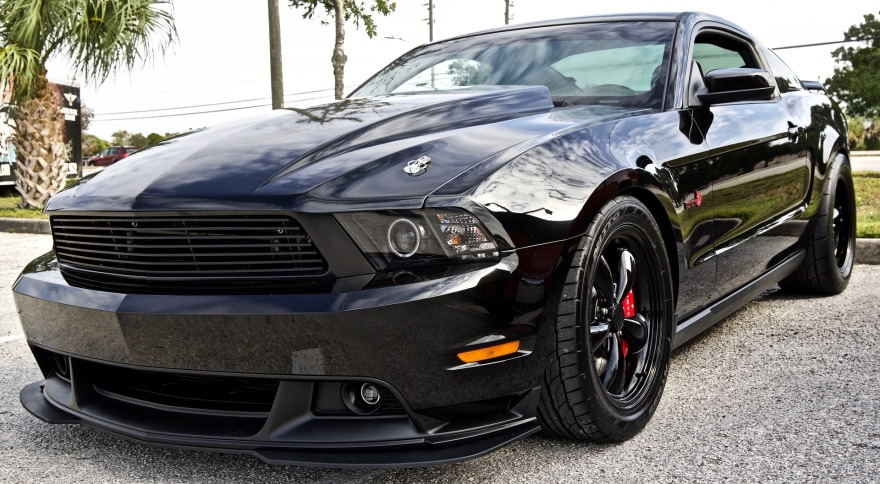
4. Muscle cars have a shady history.
(NASCAR Hall of Fame)
Prohibition had an indirect influence on the evolution of the muscle car. Bootleggers anxious to evade law enforcement favored fast rides. It’s no stretch that automotive manufacturers would get their inspiration from this unfulfilled need. The history of muscle cars and NASCAR is intertwined with the likes of moonshine runner Junior Johnson among others.
5. Muscle cars almost drove off into the sunset in the early 1970s.
(US EPA)
Several disconnected events happened in the early 1970s that almost spelled the end of the muscle car. It’s no secret that these vehicles aren’t the most fuel-efficient. The Clean Air Act of 1970 ushered in regulations that nearly crippled automobile manufacturers. Then, the 1973 oil crisis played a significant role, leading to higher costs for owning one. Luckily, the industry recovered.
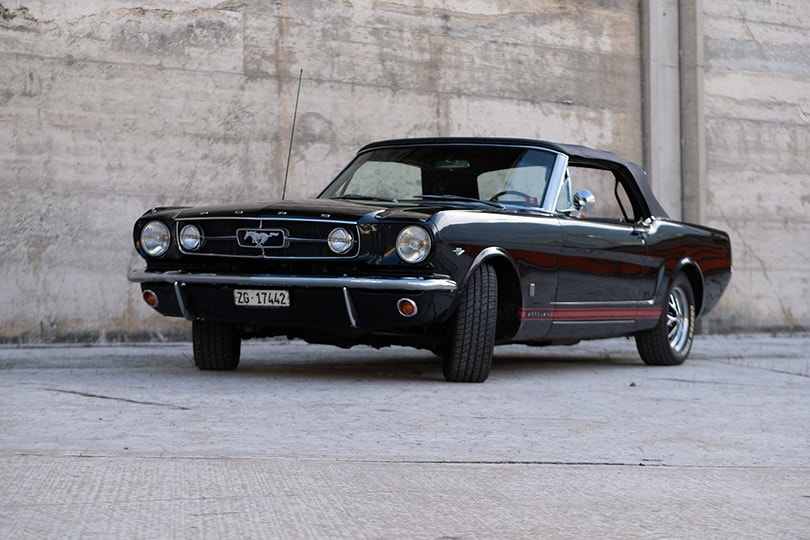
Fun Facts About Muscle Cars
6. Muscle cars come in several sizes.
(NADA Guides)
It’s helpful to put this tidbit in context. Remember that auto manufacturers were producing full-size vehicles at the start of the muscle car era. They eventually became more intermediate-size in the mid-1960s. Later, the pony car appears on the scene with vehicles such as the Ford Mustang Boss. These models only fit the definition that acceleration is still on the radar.
7. The 1968 film “Bullitt” is considered by many to be the ultimate muscle car movie.
(IMDb)
Perhaps no movie shows muscle cars in all their glory than “Bullitt” starring Steve McQueen. The chase scene with McQueen driving his 1968 Ford Mustang GT is legendary. It introduced another generation to the power and performance of muscle cars. You can’t watch this film and not want to get behind the wheel of this Mustang and experience it for yourself.
8. Several musicians have written songs about muscle cars.
(Motor Trend)
Muscle cars have found their way into pop culture in the music scene, too. Several artists have immortalized these vehicles with songs such as “Mustang Sally” by Wilson Pickett and “409” by the Beach Boys. We have had an attachment to our muscle cars like no other vehicle before their arrival on the car scene. When was the last time you heard anyone singing about the family station wagon?
9. Alabama police drove muscle cars in 1971.
(Hemmings.com)
Alabama law enforcement drove in muscle-car style behind the wheel of the 1971 AMC Javelin. The affordability of the vehicle made it an ideal choice. The 401 ponies powering the car made it a challenge for anyone trying to get away from the police. Sadly, it was only around for two years for the officers to enjoy.
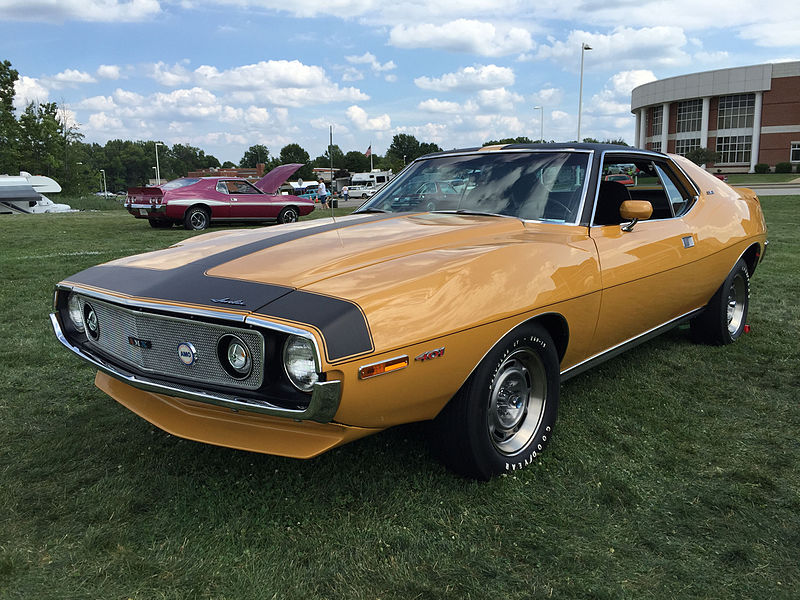
10. The 1971 Ford Mustang 429 Cobra Jet offered a Drag Pack.
(Motor Trend)
The connection between muscle cars and racing is well-known. While the manufacturers weren’t keen on the bootlegging history, they were more open to the fast car image. That’s perhaps one reason why Ford offered a Drag Pack with its iconic Mustang. It included a Detroit Locker differential, a higher ratio rear axle gear, and engine components. Vroom! Vroom!
The Future of Muscle Cars
11. 2020 marked the end of an era for the Chevrolet Corvette.
(Cars.com, CarMax)
Chevrolet did the unthinkable in 2020. It discontinued manual transmission in the Corvette. Instead, it comes with only one powertrain, an eight-speed, dual-clutch automatic transmission. The manufacturer cited slumping sales for that reason. Stick shift has been on the skids since 1996, with only 2.4% of cars sporting this transmission. Interestingly, the market is the opposite in Europe.
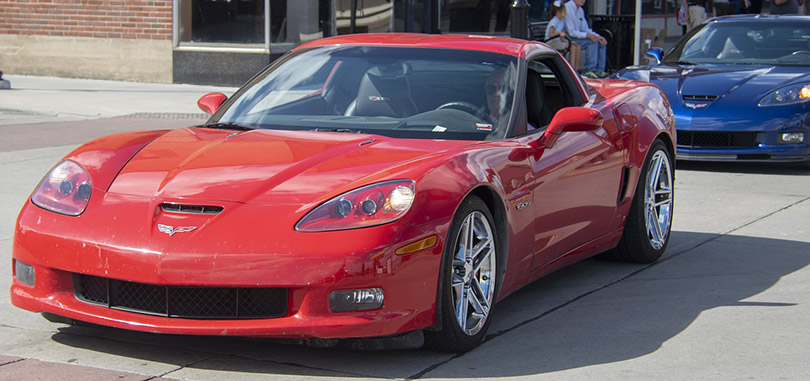
12. The future of big internal-combustion engines is uncertain.
(Autoweek)
Most vehicles sold today run on internal-combustion engines. However, several manufacturers have hinted at an all-electric future, including Mercedes-Benz, Ford, and General Motors. The impact on muscle cars is even more unclear. We know that changes are certain because of the vehicle’s effects on climate change.
13. The last Chevrolet Camaro will roll off the line in 2023.
(Muscle Cars & Trucks)
After six generations of the Camaro, Chevrolet is calling it quits after the 2023 model year. The SS and Z28 pony cars will exist no more. Instead, the manufacturer is going to devote its resources to its other star, the Corvette. We think it’s a wise move. It’s hard to deny the cool factor of this ride versus what some have called the Pontiac Firebird wannabe.
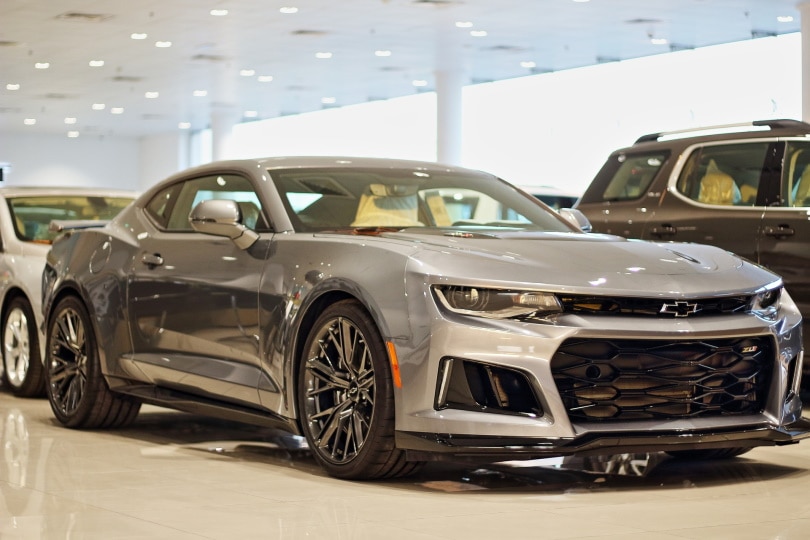
14. The most paid at auction for a muscle car was $13.75 million.
(RM Sotheby)
The 1962 Shelby Cobra CSX2000 isn’t just any car. It is the first one assembled by the man himself, Carroll Shelby. It sold for a staggering $13.75 million at a Sotheby’s auction. What makes the car more remarkable is that it has never been restored. The story still exists in the dings and dents that tell its history. This vehicle was also a marketing tool that helped propel the Shelby Cobra into the automotive stratosphere.
15. The arrival of the e-muscle car is on the horizon.
(Car and Driver)
Climate change has impacted all aspects of our lives, with more changes on the horizon, including muscle cars. The George-Jetson version is what you’ll find in the 2024 Dodge Challenger eMuscle. While details are limited as of this writing, you’ll likely see updates of the popular trims with new technology in the driver’s seat. Stay tuned for something electrifying coming to a dealership near you.
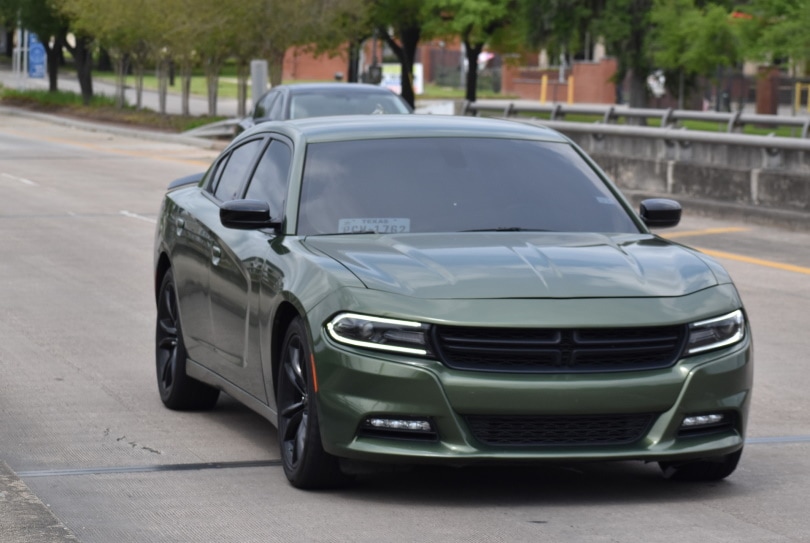
Frequently Asked Questions About Muscle Cars
How did muscle cars influence the automotive industry?
The legacy of muscle cars is evident in the acceleration and performance you see in today’s vehicles, albeit for different reasons. Speed meant better aerodynamics, something that Junior Johnson practiced on his cars. It also helped drive technology to produce bigger and better engines. It created a domino effect that affected everything from racing to movies.
(NASCAR Hall of Fame)
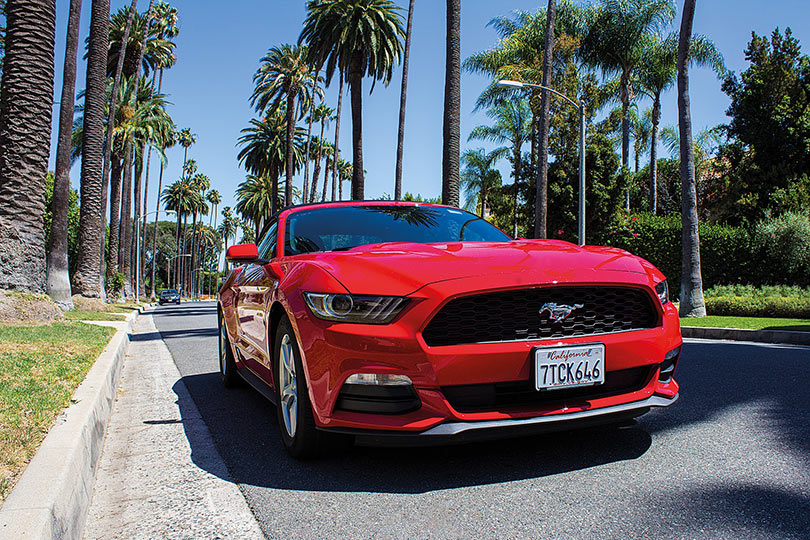
What were the so-called muscle car wars?
Muscle cars caught the world by storm during the 1960s and 1970s heyday. As you can imagine, it also sparked competition among the major auto manufacturers. It literally became a race to produce the fastest and best-looking car, as evidenced by top contenders such as the Pontiac GTO and AMC Javelin. People wanted to race, and the industry responded.
How does a sports car differ from a muscle car?
It’s tempting to use the terms interchangeably. However, there are stark differences between the two types. A sports car will go fast, but it will also show superior handling, exemplified in makes such as Alfa Romeo and Bugatti. Muscle cars find their kindred spirit in drag racing as opposed to the snaking tracks in rugged terrain that sports cars dominate.

What is the fastest muscle car?
The 2020 Dodge Challenger SRT Demon takes the top spot as the fastest muscle car with its 840-horsepower engine. This beast goes from 0–60 mph in a blistering 2.3 seconds. You can just feel the Gs thinking of it. And it’s street legal, too.
Related Read: 15 Fastest Cars In The World (with Pictures)
(Car and Driver)
What is the rarest muscle car?
Many vehicles had very short runs of less than 100. Ford only produced 57 of its 1967 Fairlane 500 R-Code. However, the rarest muscle car comes from a familiar name. It is the 1967 Shelby Mustang GT500 Super Snake, of which only one was made. Remember that some of these rare vehicles are prototypes that may have never made it to the assembly line.
(Top Speed)
Conclusion
Many would say that muscle cars are as American as apple pie. They certainly speak to generations of enthusiasts who appreciate the high performance that these vehicles offer. And there’s no denying their eye-catching designs that evoke images of their exhilarating speed. Our passion for these cars hasn’t waned since their peak in the 1960s and 1970s.
Featured Image Credit: Piqsels
Contents
